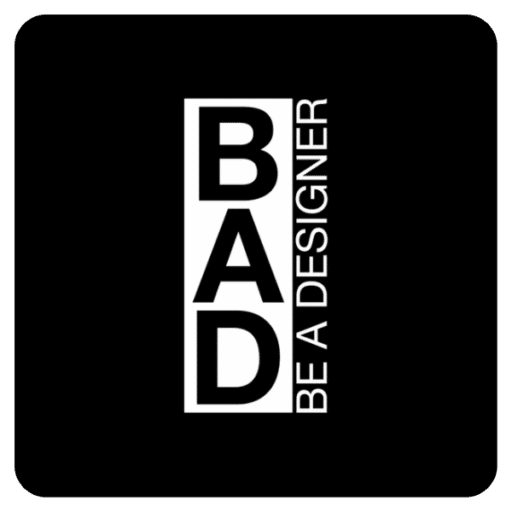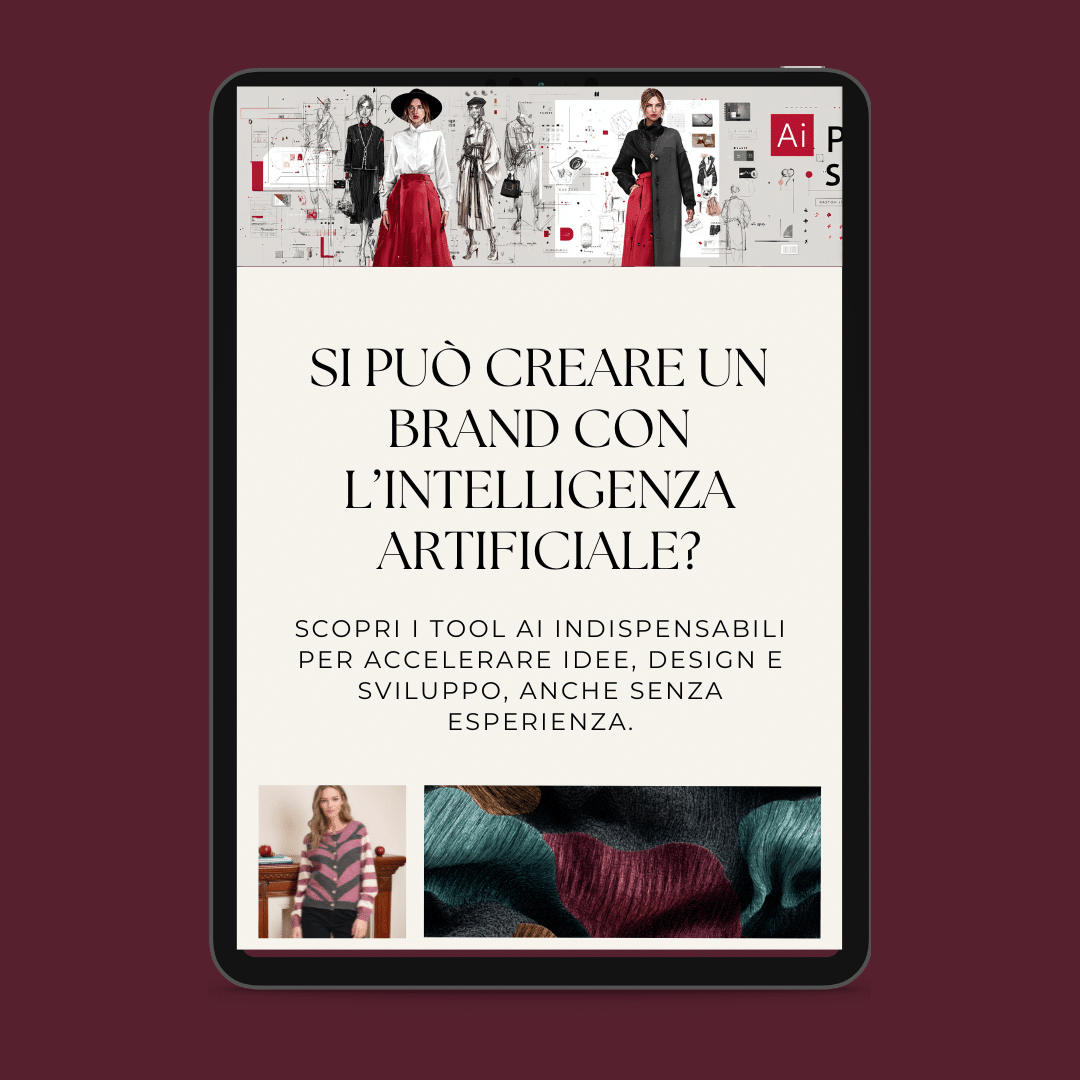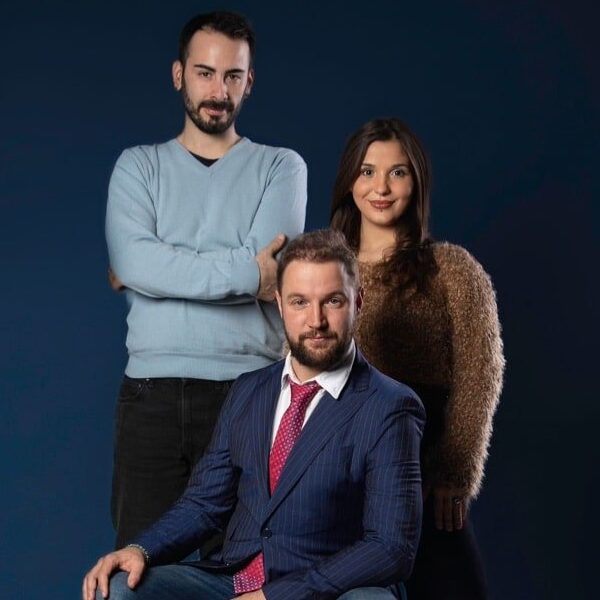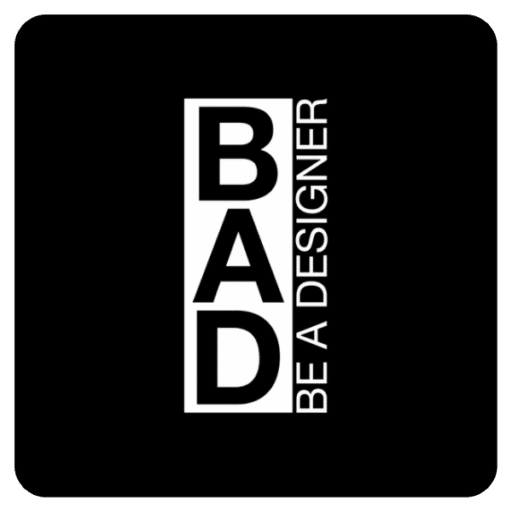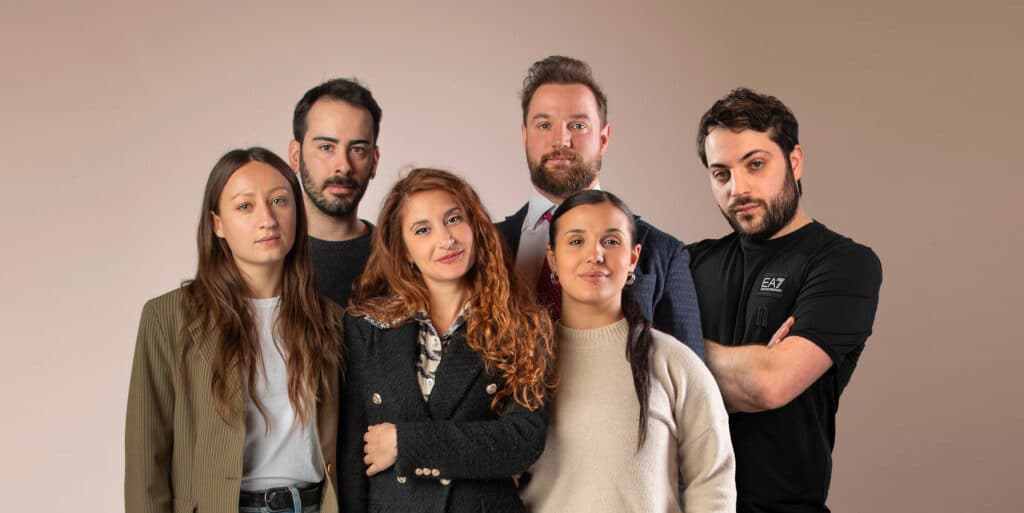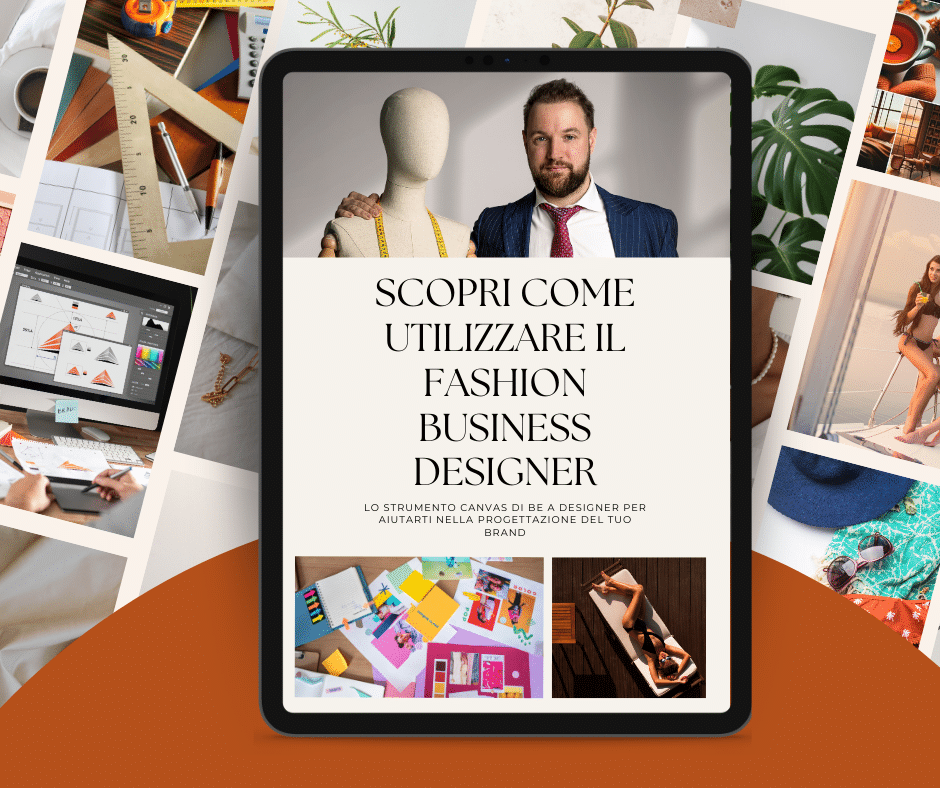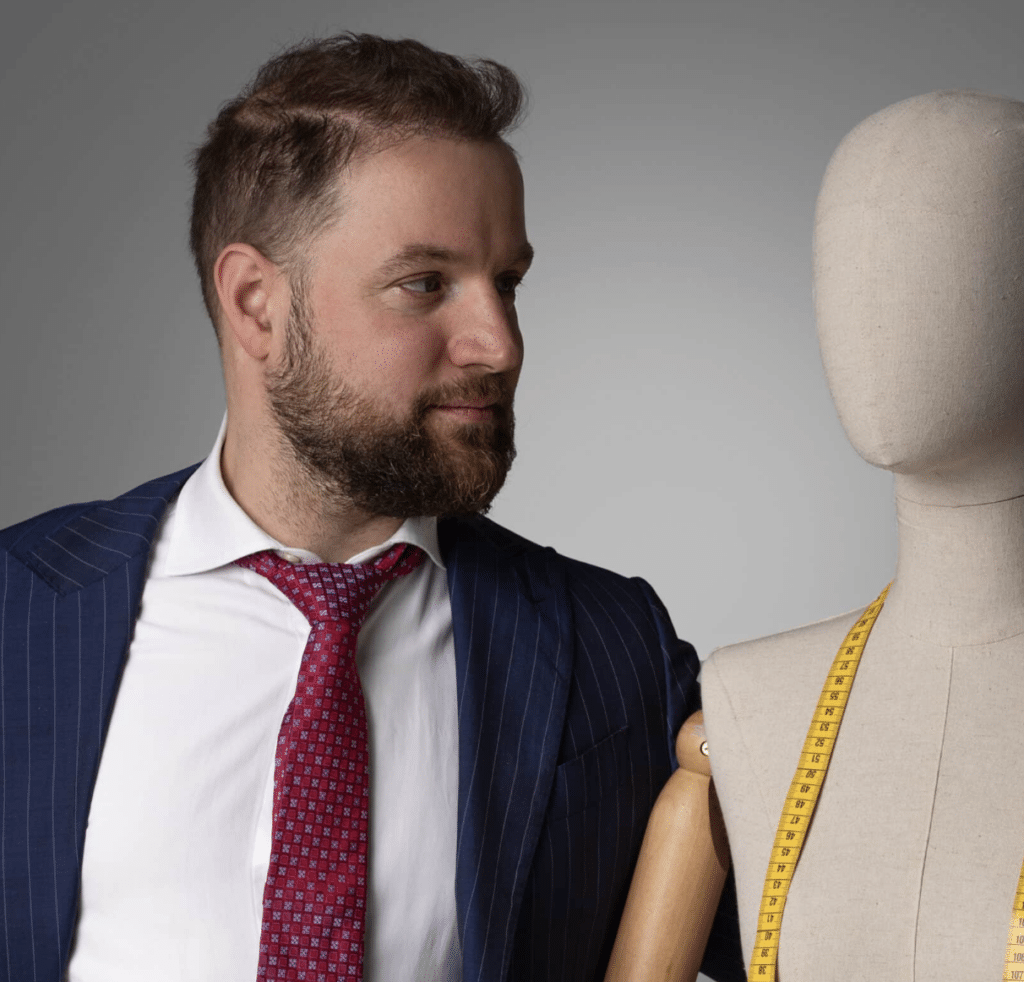Table of Contents
“I have a perfect idea for a collection. I see it in my head, I visualise the garments, but when I take a pencil in my hand... the paper stays blank.” If you have ever felt this way, know that you are not alone. I have heard it hundreds of times over the years: brilliant ideas, unique visions, stories to be told through fabrics, blocked by the obstacle of drawing.
I don't deny it, this belief, until a few years ago, had a kernel of truth. Technical drawing, sketching, the graphic representation of ideas were real and high barriers to entry. The very idea of using artificial intelligence in fashion was almost science fictiona subject perceived as dark, apocalyptic, with the widespread fear that AI would “steal the jobs of creatives”.
But the 2025 completely overturned this narrative. L’AI has become a priority not only for big brands, but for style offices, emerging designers and even for those who dream of launching their own brand from scratch.
This transformation has an immediate effect: access has been democratised. Huge budgets and advanced technical skills are no longer needed. Anyone with a vision can start turning it into images, prototypes and visual concepts, using free toolsies or low-costs that are a real help - not a substitute, not a stopgap, but a powerful support.
In this article you will discover how this revolution is changing design, how AI can become a true co-designer, what are the five essential tools to start with and, above all, how to integrate them without losing your stylistic identity.
👉 If, while reading, you recognise yourself in this feeling of “vision in your head but blank sheet of paper”, keep a few pictures of your ideas handy: they will come in handy when you start experimenting with the tools we will see later.
Does AI bridge the gap between idea and realisation?
In 2024 Veeton published a key guide: 73% of fashion leaders considered AI a strategic priority, but only 5% felt able to actually use it, underlining the huge gap between potential and reality.
Only a year later, we can say that this gap has been definitively closed: we have moved from curiosity to full operational adoption. Today, artificial intelligence tools - from design platforms such as Raspberry AI to conversational systems adopted by brands such as Ralph Lauren - are no longer “experimental technology”, but real working infrastructure integrated in creative processes.
Think of the traditional path of an emerging designer. First you have to learn how to draw proportionate figures, then master technical drawing with all its intricacies: how to represent a gathering, a fold, a drape. You have to know the materials to make them visually credible. And only after months or years of practice can you finally communicate your vision to a manufacturer or investor.
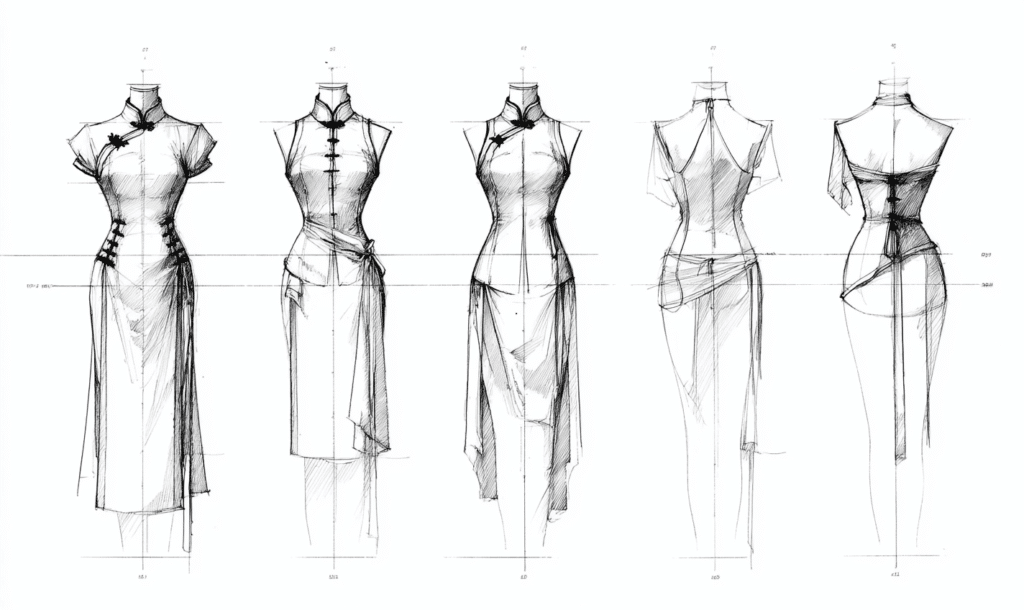
L'artificial intelligence in fashion bridges this gap in a radical way. It does not ask you to become an expert illustrator, but to describe what you see in your head, to show visual references, to communicate the emotion you want to convey. And within seconds it generates professional visuals that change the game completely.
The numbers speak for themselves: according to recent industry studies, brands that integrate AI into the design process reduce development time by 40-60% and prototyping costs by up to 30%. For an emerging designer or an entrepreneur who wants to bring his or her project to life, this can mean the difference between launching a collection or getting stuck in the concept phase.
👉 If you already have some collection ideas in your drawer, now is the perfect time to pull them out and ask yourself: “What would it look like if you visualised it with AI?” Even just this exercise can unlock you more than many theoretical courses.
What can artificial intelligence do for those who cannot draw?
Let us start with what AI is really capable of doing today, because the potential is impressive.
La generation of visual concepts is the most immediate application: from text descriptions or reference images, AI can create visualisations of garments, complete styling, colour palettes and moodboards in seconds. Tools such as Midjourney, DALL-E 3 o The New Black specialise in turning words into images, reducing jobs that used to take hours of manual research and drawing into seconds.
Then there is the data-driven trend forecasting: platforms such as Heuritech They analyse millions of images from social, runway and street style to identify emerging trends months before they become mainstream. For those starting from scratch, it means making informed decisions instead of going “by intuition”.
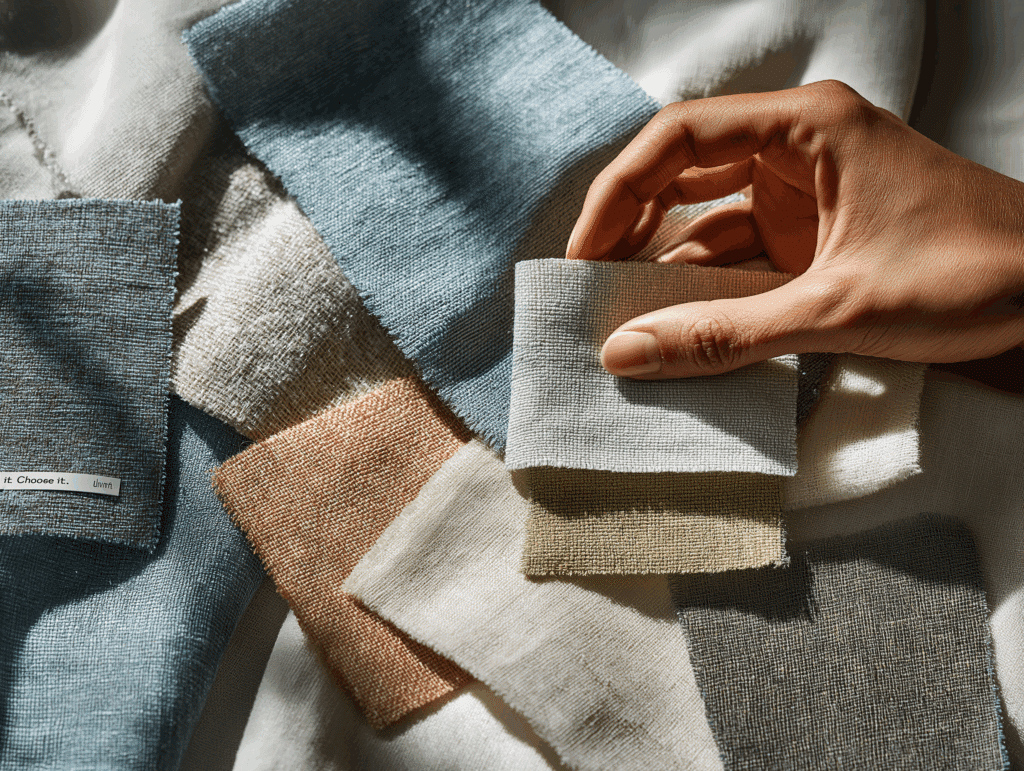
AI also helps a lot in the pattern generationcan create customised prints, textures and patterns or modify existing ones to your specifications.
You may already know this: if you want to see your designs worn, some tools allow visualisation on virtual models with different fits, body shapes and settings, without the need for expensive photo shoots. The end result is stunning, and makes professional photographers shake in their boots.
Some more advanced tools even offer preliminary technical assistancematerial suggestions, optimisation of fabric consumption, basic data sheets, structured concepts.
What artificial intelligence CANNOT do (and why you still need a human eye)
But let us come to the crucial part: what AI cannot do - and probably never can.
First of all, the’AI does not replace your creative vision.
But how does it work? It generates combinations based on what it has already seen, but the real innovation, the breaking of the mould, the “nobody has ever done this” still belongs and only belongs to the human being.
A generated image can be beautiful but totally unfeasible from a technical or economic point of view. Clients who come to our style department with the aim of creating their own fashion brand are often faced with the same scenario: AI-generated images are undeniably spectacular... but many times impossible to realise, both from a technical and a production point of view.

There is another issue that opens up when talking about the potential of ai, namely brand identity: ai can generate thousands of excellent variations, but the direction, the curatorship, the coherence... that's yours alone. Without strong human guidance, you risk a collection that is technically sound but empty of meaning.
Finally, real fittings, people's emotional reactions to garments, the tactile experience of materials: all this AI can only imagine, not replicate. The truth is that AI is an amplifier of talent, not a substitute. If you have a strong vision but lack certain technical skills, AI gives you a voice. If vision is lacking, AI only generates visual noise.
👉 If you feel you have the vision but lack “the technical pieces”, start marking the doubts that come to you while reading: they will be the first questions to ask a Beadesigner team professional when you want to discuss your project.
Now that we have framed the playing field, let's see what concrete tools you can start using today.
The 5 AI tools we recommend, from the least to the most technical
DALL-E 3 is probably the more accessible starting point for those who want to test fashion image generation. Available for free through Bing Image Creator or via ChatGPT Plus subscription for $20 per month, it excels at understanding complex prompts and generating stylistically consistent images.
Its strength lies in its ability to turn detailed descriptions into concrete visuals. You can write “An oversized washed denim jacket with black leather details, asymmetric cargo pockets, urban street-style styling, editorial photography” and within seconds get an image that captures exactly that aesthetic. Want to see the same jacket in other colours or with different proportions? Just edit the prompt and regenerate.

The real magic happens when you start using it to create complete lookbookdescribe matching outfits, specify the setting and photographic style, and DALL-E 3 returns images that you could show directly to buyers or investors. Of course it has its limitations: quality can vary, very technical details such as stitching or complex constructions are often approximate, and it sometimes generates anatomical elements or unrealistic proportions.
The trick to professional results is to always add terms like “fashion photography”, “editorial style” or “high-quality fashion illustration” in your prompts. Always specify lighting and setting to have more control over the final result. With a little practice, you learn to ’talk“ to AI and the results improve exponentially.
Midjourney: when you want superior results
If DALL-E 3 is accessible, Midjourney is probably the most powerful tool of image generation for fashion use. With a basic plan at USD 10 per month and a limited free trial, it attracts a huge community of designers, and the aesthetic quality is often superior to any alternative.
The prompts in Midjourney follow a particular structure that may seem cryptic at first: you describe the subject, add stylistic details and materials, specify lighting and photographic style, then use technical parameters to refine the result. A practical example: “female model wearing minimalist black coat with architectural silhouette, wool gabardine, studio lighting, vogue editorial, clean background -ar 2:3 -stylize 500”. That “-ar 2:3” controls the aspect ratio, perfect for magazine-style vertical images, while “-stylize 500” tells the AI how creative versus literal to be.
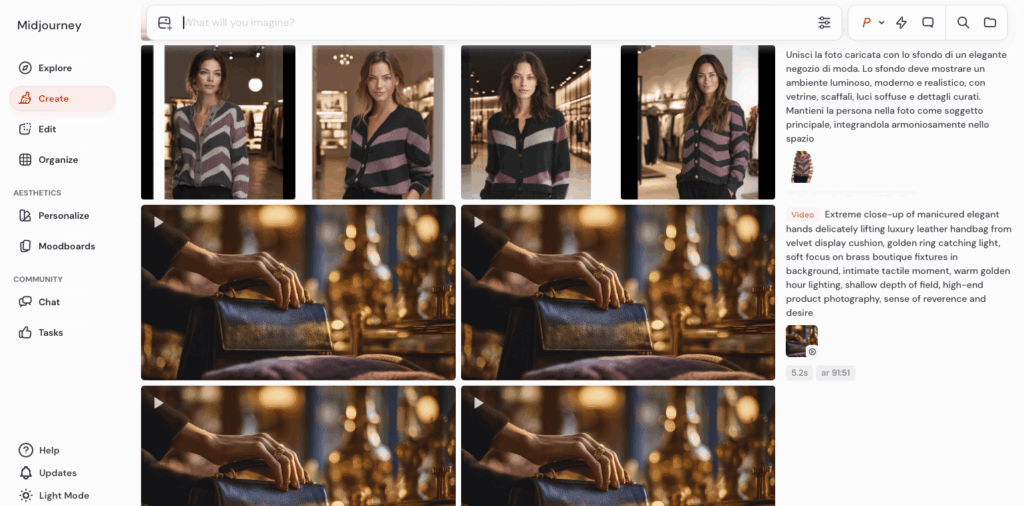
A particularly useful function is the “describe” command that you can use on existing images to understand how Midjourney “reads” a style. You upload a photo from Vogue that you like, use /describe, and Midjourney gives you four different prompts that might generate something similar. It is like having a tutor who teaches you the language of AI.
Midjourney requires practice to master its “language”, and a subscription is necessary for serious use. Also, remember that the images generated can only be used commercially with a paid plan. The good news? By joining Midjourney's Discord community, you can study other fashion designers“ prompts for free. There is a whole sub-culture of "prompt engineering”fashion to learn from every day.
Canva AI: the final layer for professional presentations
Canva was not born specifically for fashion, but its suite of AI tools makes it perfect for the moodboard and presentation phase. With a generous free plan and a Pro upgrade for $12.99 per month, it offers features such as Magic Design, Background Remover, and an AI Image Generator based on Stable Diffusion.

Canva's real strength lies in being the perfect “final layer” of your creative process. Generate your fashion images in Midjourney or DALL-E, then compose them in Canva to create professional presentations to send to buyers or show on Instagram. You can create moodboards using Canva's templates combined with the AI image generator, automatically extract consistent colour palettes by uploading reference images, and build pitch decks combining your AI-generated images with professional layouts.
The function of background removal is particularly useful: it isolates garments generated by other AIs and reassembles them in new contexts without the need for Photoshop. Want to see that jacket on a clean white background instead of the original urban setting? One click and the background disappears.
Sure, Canva's AI image generator is less sophisticated than Midjourney or DALL-E, and is more marketing-oriented than pure design. But that's the point: there's nothing to stop you from using Midjourney for pure creativity, then running everything through Canva for professional packaging. It's a workflow that works perfectly for those who need to present their ideas to clients, investors or on social media.
👉 When you start generating the first images, try to select 5-6 concepts that really represent you and imagine what it would be like to talk about them with a buyer or consultant: if you already feel “stuck” here, it means you are ready for a more structured discussion about your project.
How to go from concept to datasheet? Try Cala.ai and Pattern Generator AI
Cala is probably the most interesting tool for emerging designers who want to not only design, but also produce. Currently in beta with still limited access, it is an end-to-end platform that integrates AI design with real supply chains, and this completely changes the rules of the game.
Unlike Midjourney or DALL-E which give you “only” beautiful images, Cala accompanies you all the wayIt generates garment designs from rough prompts or sketches, suggests real materials available in their supplier network with actual prices, creates basic data sheets, and above all connects you directly with manufacturers for prototyping and small-batch production with very low minimum orders, even as low as 25-50 pieces.
The process is designed for those without production experience:
you start with an idea or a poorly made sketch, the AI generates professional variations, you choose fabrics from their library by seeing how much they really cost, you request physical samples that arrive at your home, and only when you are convinced do you order the production of minimum quantities.
You don't have to make 500 pieces hoping to sell them.
Of course, being in the beta phase, access is still restricted and may require waitlists. And when you move to production, the costs are higher than other AI tools (but competitive with traditional manufacturing). You also have less “free” creative control than Midjourney, because Cala guides you towards technically producible solutions.
But that is precisely the turning point: Cala represents the future because it does not just give you virtual images, but a complete journey from idea to finished wearable garment. For someone starting from scratch without a network of Italian or Chinese manufacturers, without knowing how the supply chain works, it is truly game-changing.
Pattern Generator AI: you can create unique prints without being able to illustrate
This category includes several tools that use AI to generate customised patterns, prints and textures.
Among the most accessible are Patternedai.com where you upload an image or a prompt and get ready-made seamless patterns, the AI Pattern Generator of Pixlr which is completely free and generates graphic patterns, and Adobe Firefly integrated in Photoshop for those who already have Creative Cloud, which allows textures and patterns to be generated from simple textual descriptions.

The value for a fashion designer lies in the possibility of create completely unique prints for your own collection without being able to draw by hand. You can start with an abstract concept like “I want a print that evokes the movement of waves but in a minimalist geometric style” and see what the AI comes up with. In seconds you generate colour variations of the same pattern, experiment with complexities that would be very difficult to draw manually, and create realistic textures to simulate materials in 3D renders.
Caution though: the seamless perfection required for real textile prints may require manual post-production.
Not all AI patterns are ready to go directly into production, and files may require specific adaptations for textile printers. The ideal is to generate the basic pattern in AI, then bring it into Photoshop or Illustrator for technical finishing, and finally to contact digital textile printers who produce custom footage of your AI-generated prints. There are several in Italy who also work on small quantities.
When to use AI and when to use your head?
Now that you know the tools, the real question is: how do I integrate them into my process without turning into a “prompt compiler” who loses his creative voice, knowing that artificial intelligence in fashion is a tool and not a substitute?
Here is a tested workflow with dozens of emerging designers we have been following for years, structured in stages that balance AI and human intuition in a natural way.
Inspiration and Concept Phase: 70% human, 30% AI
Always start with you, your story, your vision.
What is the emotion you want to evoke? What kind of person do you want to dress and for what moment in their life? This phase is deeply personal and cannot be delegated to an algorithm.
Create your own initial moodboards manuallySpend hours on Pinterest, browse fashion and architecture magazines, take photos on the street, collect cultural references that speak to you.
Only when you have a clear emotional direction, bring AI into the conversation. Ask the AI to generate images that capture that mood, or to show you different interpretations of your initial concept. But then filter ruthlessly: keep only what resonates with your original vision, discard everything else.
Development Phase Design: 50% human, 50% AI
Here the AI really becomes a co-designer. You detail three to five key pieces of the collection in your favourite tools, generate ten to twenty variations of each piece, and then physically print everything. Yes, physically: hang it on the wall, live with those images for days. This analogue switching is fundamental because it completely changes your relationship with images.
On the screen everything looks good, on the wall you understand what really works.
Select the variations that convince you emotionally, not just aesthetically, and ask for new iterations by refining the prompts based on what you have learned. Sometimes you combine elements from different generations to create unique hybrids that AI alone would never come up with. This phase is constant dialogue: the AI in fashion generates ideas, you select and guide the direction, the AI processes your feedback, and the cycle continues until you arrive at something that feels “yours”.
Maintaining the consistency of a collection
The AI tends to generate isolated, individually beautiful but disconnected pieces. The consistency of the collection is entirely your responsibility. Use tools such as Canva AI to create a visual board of the complete collection, put all the pieces side by side, and check that there is a recognisable common thread: consistent colour palette, dominant silhouettes that repeat with variations, constant emotional mood that ties everything together.
If something is out of place, if a piece seems to come from another collection, go back to AI to fix it but with precise indications of what is missing. Sometimes that means eliminating beautiful pieces that don't serve the narrative. This curatorship is what turns a series of beautiful pieces into a collection with identity.
👉 When you get to this point - a small virtual collection that “looks like you” - it is the ideal time to get someone to work with you every day between moodboards, fabrics and production: even a single comparison can save you costly mistakes in the later stages.
Virtual to Real Phase: 10% AI, 90% technical expertise
And here we come to the critical moment where many get stuck. AI images look great on the screen, but how do you turn them into real garments that someone can wear?
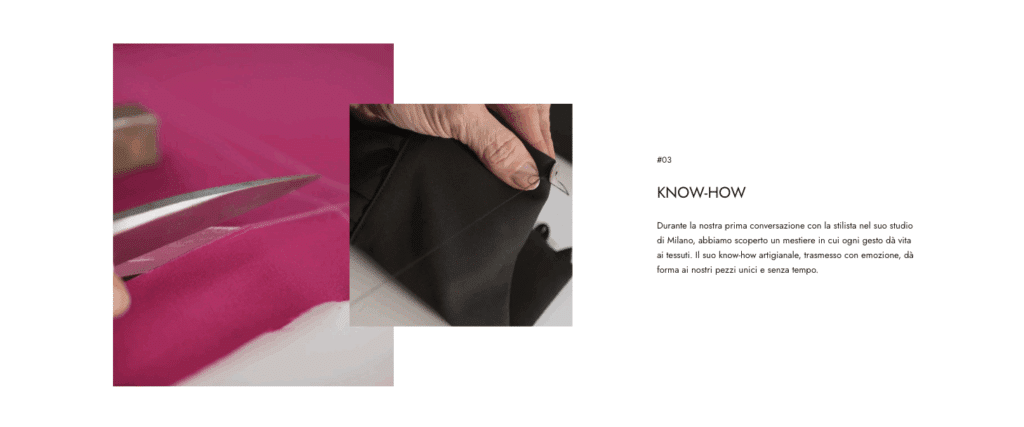
You need real style office expertise: technical feasibility analysis to understand if that design is buildable and with which real fabrics, creation of professional data sheets complete with measurements, seams and finishes, sourcing of materials to find fabrics that match your vision at sustainable prices, selection of manufacturers that can make these garments while maintaining quality, and prototyping that transforms the digital file into a physical sample.
It is precisely at this stage that a style office like Be A Designer becomes essential.
We can take your AI visions and translate them into manufacturable garments, optimise costs without sacrificing quality, manage suppliers and manufacturers, and ensure that the leap from screen to reality maintains the integrity of your creative vision.
Because AI gets you to 60-70% of the path, but the last 30% requires experience that cannot be improvised.
👉 If you already have some AI images that you feel are “right” but have no idea how much it would cost to produce them or whether it is technically feasible, this is the perfect time to show it to a style office: Even just knowing what is realistic and what is not will save you months of blind attempts.
If you want to understand whether your AI ideas are actually producible and how much they might cost in reality, book a free consultation of 30 minutes with us. We will analyse your designs together and we will tell you honestly what it takes to make them real, without obligation.
Take your next steps with Be a designer
Let's face it: AI takes you far, but not all the way. What happens after you generate your designs is the path that separates a creative hobby from a real brand.
Technical validation is the first critical stepA professional must assess whether designs are feasible, suggest modifications to make them producible without distorting them, and identify critical construction issues that cannot be seen from the image but become costly problems in production.
Then there is the engineering: turning the concept into industrial data sheets complete with graded measurements for sizes, detailed material specifications understandable to manufacturers, precise construction instructions for seamstresses, and packaging and labelling details that comply with regulations.
Smart sourcing is an art in itself: finding the right fabrics at the right price is not trivial. It takes knowing reliable suppliers, understand MOQs i.e. the minimum orders that each supplier requires, negotiating prices and conditionsi, and physically test the quality before ordering large quantities.
Production management includes choosing the right manufacturer by considering whether to produce in Italy or abroad according to your budget and positioning, managing samples until you get the perfect garment, doing quality control on each batch, coordinating often complicated schedules, and managing logistics and warehousing.
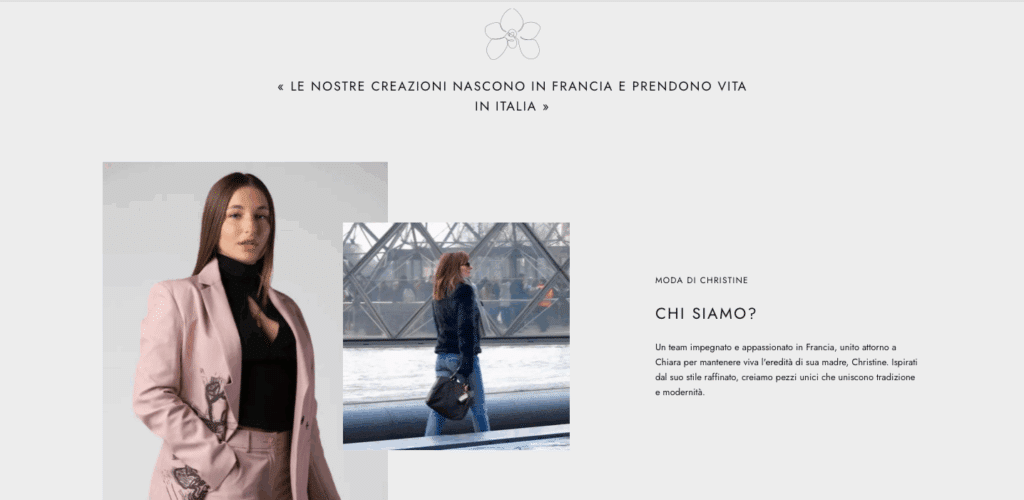
Cost optimisation is where many projects run aground: balancing production cost, selling price and margins to be sustainable. You need experience to understand where you can save money without compromising quality and where you need to invest.
Finally, there is the final brand identityensure that the collection is not only “beautiful” but tells a coherent story, has a clear positioning in the market, speaks to the right target with the right language, and is recognisable as “yours” among a thousand other proposals.
Be A Designer exists precisely to bridge this gap between idea and realisation. We don't just sell detached “consulting”, we become part of your team: we teach you as we make, we guide you in your decisions, we grow with your project. Our approach with AI tools is pragmatic: we embrace them because we use them internally to accelerate concept development, we complement them by adding the human and material experience that AI does not have, and we transform them from a virtual image to a physical item in your hand that you can sell.
Whether you generated your designs with Midjourney or sketched them by hand makes no difference to us, what matters is turning them into real garments that you can sell.
Together we assess the technical feasibility of your ideas without stretching the truth, create all the necessary data sheets for manufacturers, find the right suppliers within your budget, manage the entire production process so you can focus on creativity and business, and teach you everything you need to know to become an independent entrepreneur with a winning brand!
FAQ - Frequently Asked Questions
Can I create a fashion collection even if I can't draw?
Yes. Today, AI allows you to visualise your ideas through realistic images, even without technical drawing skills. What counts is your creative vision.
Are AI-generated images always producible?
No. Many AI visuals are aesthetically beautiful but technically unfeasible. You always need the evaluation of a style office to understand what a real garment can become.
Can AI replace a stylist or a style office?
Absolutely not. AI is a support, not a substitute: it accelerates the creative process, but artistic direction, collection coherence and feasibility remain human competences.
What tools should I use to get started?
For concepts: DALL-E 3 or Midjourney.
For presentations: Canva.
For the transition to production: Cala.ai.
Many are free or require minimal investment.
How do I know if my AI designs are feasible?
Show them to a professional style office: at Be A Designer we analyse your ideas, assess the technical feasibility and guide you step by step in transforming them into real garments.
